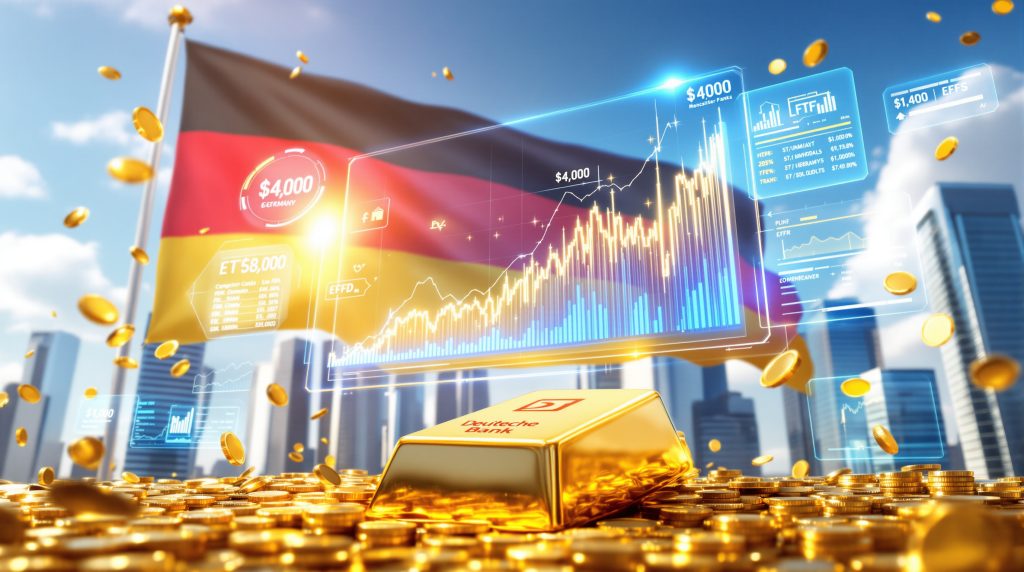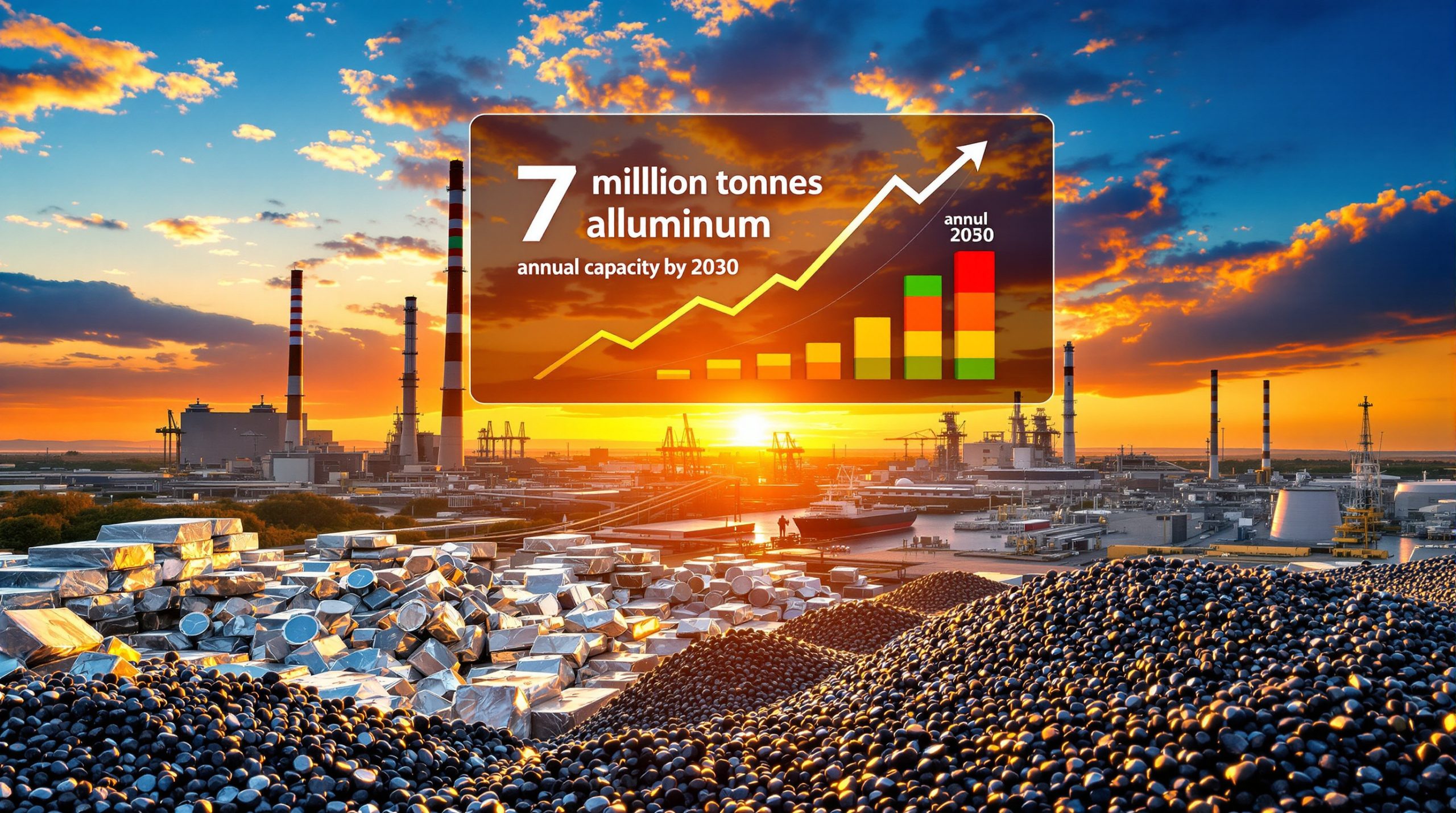Deutsche Bank Signals Gold Recovery as Precious Metals Rally Returns
Following one of the most dramatic precious metals corrections in recent history, Deutsche Bank has emerged with a surprisingly optimistic Deutsche Bank gold outlook assessment of gold's near-term prospects. The German banking giant's analysts now suggest that the recent downturn in precious metals markets may be approaching its conclusion, setting the stage for renewed upward momentum.
The correction came after gold reached unprecedented heights above $4,000 per ounce, with silver simultaneously climbing to $54 per ounce in what many consider the most significant precious metals rally ever recorded. However, the subsequent sell-off was equally dramatic, creating substantial volatility that tested investor confidence across precious metals markets. Furthermore, this volatility has prompted Deutsche Bank to forecast significant upward movement in precious metals pricing.
Market Dynamics Behind the Recent Precious Metals Volatility
The extraordinary price movements in precious metals markets reflect underlying tensions between multiple economic forces. Central bank monetary policies, geopolitical uncertainties, and institutional investment flows have created an environment where traditional price discovery mechanisms face unprecedented challenges. In addition, recent gold highs analysis demonstrates the complex factors driving market movements.
Market participants witnessed a classic example of momentum-driven trading, where initial gains attracted additional buyers, creating a self-reinforcing cycle that propelled prices to historic levels. The subsequent correction demonstrated how quickly sentiment can shift when profit-taking accelerates and technical support levels fail to hold.
Professional traders and institutional investors have been closely monitoring volume patterns and order flow dynamics to gauge whether the recent price action represents a healthy consolidation or the beginning of a more extended decline. Early indicators suggest that buying interest has returned at lower price levels, supporting Deutsche Bank's assessment of market stabilisation.
Technical Analysis Perspectives on Gold's Recovery
From a technical standpoint, gold's recent price action has created important support and resistance zones that will likely influence future trading patterns. The rapid ascent to $4,000 established new psychological price anchors for market participants, while the subsequent decline tested key technical levels that had previously acted as resistance. Moreover, technical analysis insights provide additional perspective on current market positioning.
Chart patterns emerging from the recent volatility suggest potential double bottom formations and bullish divergences in momentum indicators. These technical signals, combined with oversold conditions in shorter-term timeframes, provide support for expectations of price recovery.
Institutional Investment Flows and Market Structure
The role of exchange-traded funds (ETFs) and institutional portfolios has become increasingly important in determining precious metals price trajectories. Unlike individual investors who may trade based on short-term sentiment, institutional participants typically maintain longer-term strategic allocations that provide underlying support during market volatility. For those considering exposure, an ETC investment guide offers valuable insights into these instruments.
Portfolio rebalancing activities by pension funds, insurance companies, and sovereign wealth funds create predictable demand patterns that sophisticated market participants monitor closely. These flows often accelerate during periods of currency weakness or when traditional asset correlations increase during market stress.
Recent data indicates that professional money managers have maintained their precious metals allocations despite short-term volatility, suggesting institutional confidence in the longer-term outlook remains intact. This behaviour contrasts sharply with retail investor patterns, where emotional decision-making often drives buying and selling decisions.
Central Bank Accumulation Strategies
Global central banks have fundamentally altered their reserve management strategies over the past several years, with precious metals playing an increasingly important role in diversifying away from traditional reserve currencies. This structural shift creates sustained demand that operates independently of speculative trading activity.
Reserve diversification efforts by emerging market central banks reflect concerns about currency stability and the need for assets that maintain value during periods of global financial stress. These purchases typically occur through discrete transactions that avoid disrupting market prices, creating steady underlying demand.
The timing and scale of central bank purchases often correlate with periods of heightened geopolitical tension or concerns about the stability of major reserve currencies. Consequently, this creates a natural hedge against the types of events that historically drive precious metals prices higher. Additionally, gold safe-haven dynamics remain a critical factor in institutional decision-making.
Supply-Side Considerations Affecting Long-Term Pricing
Mining industry dynamics continue to evolve in ways that may constrain future precious metals supply growth. Environmental regulations, permitting delays, and declining ore grades at existing operations create structural challenges that support higher price levels over time.
Exploration activities have declined significantly compared to previous decades, as mining companies focus resources on optimising existing operations rather than developing new deposits. This shift reflects both regulatory challenges and the extended timelines required to bring new mining projects into production.
Recycling flows from jewellery and industrial applications provide an important source of supply that varies with price levels and economic conditions. Higher prices incentivise increased recycling activity, but this source remains limited compared to primary mining production.
Geopolitical Factors Influencing Precious Metals Demand
International tensions and trade policy uncertainties create ongoing demand for assets perceived as stores of value during periods of heightened global risk. These factors operate independently of traditional economic cycles and can drive sustained precious metals demand even during periods of general economic stability.
Currency devaluation concerns among holders of major reserve currencies support diversification into assets that maintain purchasing power across different monetary systems. This trend has accelerated as fiscal deficits and monetary expansion policies raise questions about long-term currency stability.
Safe haven demand patterns have evolved to include not only traditional individual investors but also institutional participants seeking portfolio insurance against tail risk scenarios. This broadening of the investor base provides additional support for precious metals prices during periods of uncertainty.
Deutsche Bank Gold Outlook and Investment Strategy Implications
The Deutsche Bank gold outlook reflects sophisticated analysis of multiple market factors that influence precious metals pricing. Modern portfolio theory applications to precious metals allocation have become more sophisticated as institutional investors recognise the diversification benefits these assets provide during periods when traditional asset correlations increase. This understanding supports strategic allocations that remain relatively stable regardless of short-term price movements.
Risk parity strategies often include precious metals as a component designed to provide positive returns during inflationary environments or periods of currency weakness. These systematic approaches create consistent demand patterns that help stabilise prices during volatile periods. Furthermore, current gold price forecast analysis suggests continued upward momentum potential.
Tactical allocation adjustments by professional investment managers typically focus on timing entry and exit points rather than eliminating precious metals exposure entirely. This approach recognises both the volatility and the long-term strategic value these assets provide within diversified portfolios.
Physical vs. Financial Precious Metals Exposure
Investment vehicles for precious metals exposure each offer distinct advantages and limitations that influence investor preferences:
- Physical ownership provides direct exposure but involves storage costs and liquidity limitations
- ETF structures offer convenient trading but introduce counterparty risks and management fees
- Mining equity exposure provides leveraged precious metals exposure but includes company-specific risks
- Futures contracts enable efficient trading but require active management and margin requirements
Federal Reserve Policy Impact on Precious Metals Pricing
Monetary policy decisions by the Federal Reserve continue to influence precious metals markets through their impact on real interest rates, dollar strength, and inflation expectations. The relationship between these factors and precious metals prices has become more complex as unconventional policy tools have been employed.
Quantitative easing programmes and yield curve control measures create conditions that typically support precious metals prices by reducing the opportunity cost of holding non-yielding assets. Market participants monitor Federal Reserve communications closely for signals about future policy directions. According to Deutsche Bank research, these policy dynamics continue supporting precious metals demand.
Interest rate normalisation efforts face constraints from elevated debt levels and economic sensitivity to higher borrowing costs. These limitations support expectations that real interest rates will remain relatively low, maintaining favourable conditions for precious metals investment.
Dollar Strength and International Currency Dynamics
Exchange rate fluctuations between major currencies create important influences on precious metals pricing, as these assets are typically priced in US dollars. Dollar weakness generally supports higher precious metals prices, while dollar strength creates headwinds for price advancement.
Reserve currency dynamics continue evolving as alternative international payment systems develop and central banks diversify their reserve holdings. These structural changes operate over extended timeframes but create underlying support for precious metals demand.
Trade policy uncertainties and sanctions regimes encourage countries to maintain reserves in assets that cannot be easily restricted or frozen. This consideration has become increasingly important as geopolitical tensions have intensified.
Technology Sector Applications for Precious Metals
Industrial demand for precious metals continues growing as technological applications expand, particularly in renewable energy infrastructure and advanced electronics manufacturing. This demand source operates independently of investment flows and provides fundamental support for prices.
Solar panel manufacturing requires significant silver quantities, while electric vehicle production uses various precious metals in battery and electronic components. These applications create structural demand that grows with the adoption of clean energy technologies.
Semiconductor fabrication processes rely on precious metals for their unique conductive and corrosion-resistant properties. As global chip manufacturing capacity expands, this industrial demand source provides additional price support.
Market Psychology and the Deutsche Bank Gold Outlook
Investor sentiment patterns in precious metals markets often reflect broader concerns about economic stability and currency reliability. These psychological factors can create price movements that exceed what fundamental supply and demand conditions alone would justify. The Deutsche Bank gold outlook acknowledges these behavioural elements in its analysis.
Momentum trading strategies employed by algorithmic systems and technical analysts can amplify price movements in both directions, creating the type of volatility recently observed in precious metals markets. Understanding these dynamics helps explain both rapid price advances and subsequent corrections.
Contrarian investment approaches often view periods of extreme volatility as opportunities to establish positions when market sentiment has moved to unsustainable levels. However, the current Deutsche Bank gold outlook appears to reflect this type of contrarian perspective on recent market developments, suggesting opportunities may emerge from recent volatility.
Investment Consideration Notice: Precious metals investing involves significant risks including price volatility, storage costs, and liquidity considerations. Market forecasts and analyst opinions should be considered alongside individual risk tolerance and investment objectives. Past performance does not guarantee future results, and all investments carry the potential for loss as well as gain.
Ready to Capitalise on the Next Major Precious Metals Discovery?
Discovery Alert's proprietary Discovery IQ model delivers real-time alerts on significant ASX mineral discoveries, instantly empowering subscribers to identify actionable opportunities ahead of the broader market. Explore why major mineral discoveries can lead to exceptional returns by examining historical examples, then begin your 30-day free trial today to position yourself ahead of market movements.




